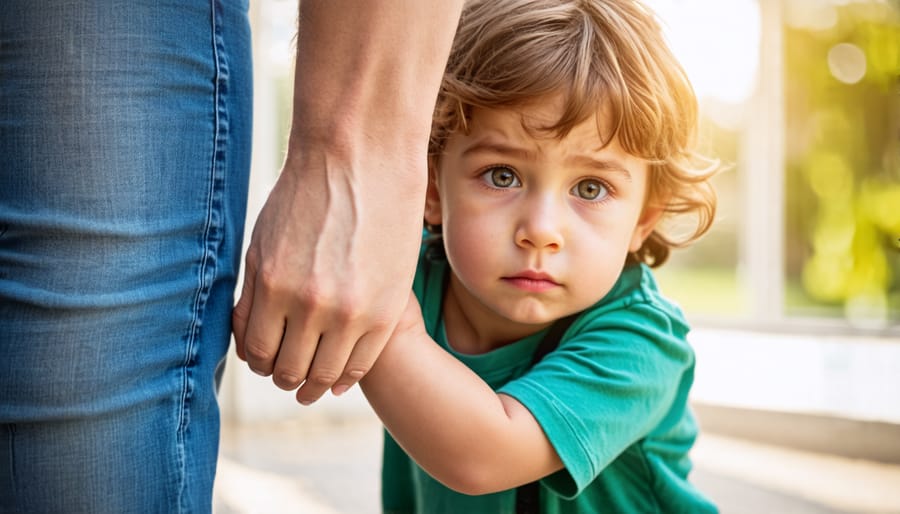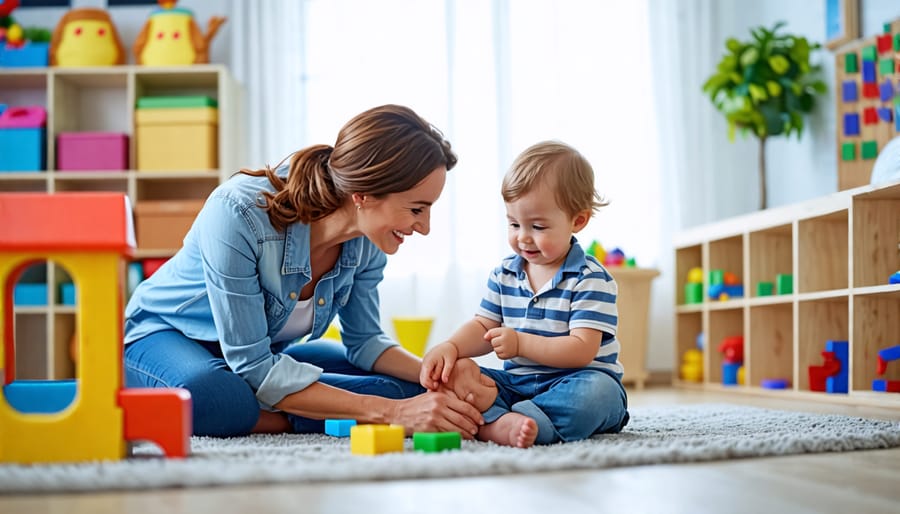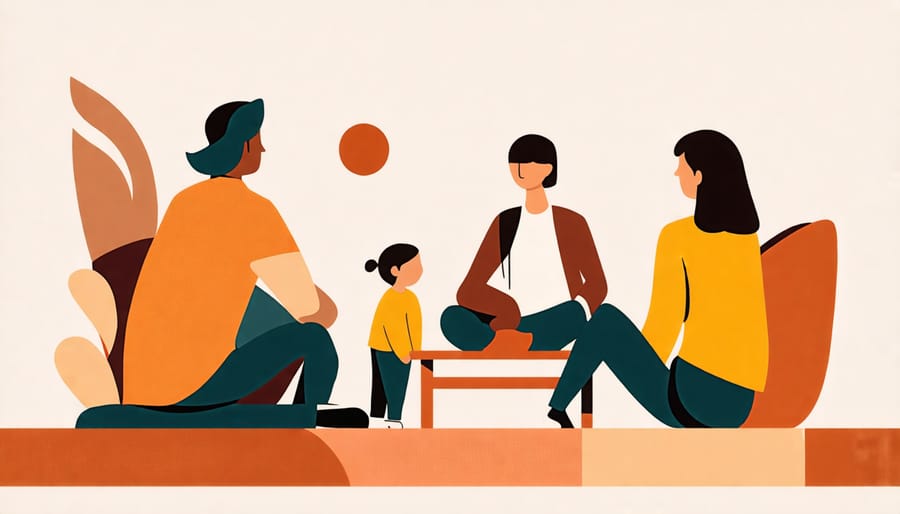Recognize the signs of anxiety in your preschooler, such as excessive worry, clinginess, irritability, and sleep disturbances. Identify potential risk factors, including family history of anxiety, significant life changes, or traumatic events. Seek professional help from a child psychologist or psychiatrist specializing in early childhood mental health for an accurate diagnosis and personalized treatment plan. Implement practical strategies at home, like maintaining a consistent routine, encouraging open communication about feelings, and modeling healthy coping mechanisms to support your child’s emotional well-being.
Understanding Anxiety Disorders

What is Anxiety?
Anxiety is a natural emotion that everyone experiences from time to time, but for some preschoolers, it can become overwhelming and interfere with daily life. While it’s normal for young children to have fears and worries, such as being afraid of the dark or nervous about starting school, anxiety disorders go beyond these typical childhood anxieties. When anxiety is persistent, intense, and disproportionate to the situation, it may be a sign of an anxiety disorder. These disorders can cause significant distress and impair a child’s ability to engage in age-appropriate activities, socialize with peers, and reach developmental milestones. It’s essential for parents, teachers, and healthcare professionals to recognize the difference between normal childhood fears and anxiety disorders, as early intervention can lead to better outcomes and improved quality of life for the child and their family.
Types of Anxiety Disorders in Preschoolers
Anxiety disorders in preschoolers can manifest in various ways, with some of the most common being separation anxiety disorder, selective mutism, and specific phobias. Separation anxiety disorder occurs when a child experiences excessive fear and distress when separated from their primary caregivers, often leading to difficulty attending school or engaging in social activities. Selective mutism is characterized by a child’s inability to speak in certain social situations, despite having normal language skills and speaking comfortably at home. This can significantly impact their ability to communicate and participate in school or social settings.
Specific phobias are another type of anxiety disorder that can affect preschoolers, causing intense fear of particular objects, situations, or experiences, such as animals, heights, or loud noises. These fears can be debilitating and lead to avoidance behaviors that interfere with daily life. It’s essential for parents and caregivers to recognize the signs and symptoms of these anxiety disorders, as early intervention and support can make a significant difference in a child’s well-being and development. If you suspect your child may be struggling with an anxiety disorder, don’t hesitate to reach out to a mental health professional specializing in child psychology for guidance and treatment options tailored to your child’s unique needs. Remember, with the right support and care, your child can learn to manage their anxiety and thrive.
Signs and Symptoms
Emotional Signs
Preschoolers with anxiety disorders may exhibit emotional signs that can be concerning for parents and caregivers. Excessive worrying is a common indicator, where the child may express persistent fears about everyday situations, such as going to school or being separated from their parents. They may also show irritability, becoming easily frustrated or upset over minor issues. Emotional outbursts, including crying, tantrums, or anger, can be more frequent and intense compared to their peers. These children may struggle to regulate their emotions, leading to difficulty in calming down once upset. Additionally, they may seek constant reassurance from adults about their worries, demonstrating a need for emotional support and validation. Recognizing these emotional signs is crucial for early intervention and providing the necessary support to help preschoolers manage their anxiety effectively.
Behavioral Signs
When a preschooler experiences anxiety, their behavior may change in noticeable ways. One common sign is avoidance, where the child refuses to participate in activities or interact with people they once enjoyed. They may also become clingy, refusing to leave their parent’s side or experiencing separation anxiety when apart from familiar caregivers. Some children may regress in developmental milestones, such as losing previously acquired language skills or having more frequent toileting accidents. Anxiety can also manifest as irritability, temper tantrums, or difficulty sleeping. Preschoolers with anxiety may have trouble focusing or appear restless, constantly seeking reassurance from adults. In social situations, they may withdraw or have difficulty interacting with peers. It’s essential for parents and caregivers to recognize these behavioral changes and seek professional help if the symptoms persist or interfere with the child’s daily life. With early intervention and support, preschoolers can learn coping strategies and build resilience to manage their anxiety effectively.
Risk Factors and Causes
Genetic Predisposition
Genetic factors play a significant role in the development of anxiety disorders in preschoolers. Research indicates that children with a family history of anxiety or other mental health disorders are more likely to experience anxiety themselves. While specific genes have not been identified, studies suggest that a combination of genetic and environmental factors contribute to the risk of developing anxiety disorders. However, it is important to note that having a genetic predisposition does not guarantee that a child will develop an anxiety disorder. With proper support, early intervention, and a nurturing environment, children can learn to manage their anxiety effectively.
Environmental Factors
Environmental factors play a crucial role in the development of anxiety disorders in preschoolers. Stressful life events, such as a divorce, moving to a new home, or losing a loved one, can trigger anxiety symptoms in young children. Parenting styles also influence a child’s emotional well-being. Overprotective or controlling parenting can inadvertently reinforce anxious behaviors, while a lack of warmth and support may leave children feeling insecure and vulnerable.
Exposure to traumatic experiences, such as abuse, neglect, or witnessing violence, can have lasting effects on a preschooler’s mental health. These experiences can alter brain development and lead to heightened anxiety responses. Additionally, children who grow up in chaotic or unpredictable environments may struggle to develop a sense of safety and security, making them more susceptible to anxiety disorders.
It’s essential for parents and caregivers to create a nurturing and supportive environment that promotes emotional resilience. This includes establishing consistent routines, promoting open communication, and providing a safe space for children to express their feelings. By understanding the impact of environmental factors on preschoolers’ mental health, adults can take proactive steps to prevent or mitigate the development of anxiety disorders.
Treatment Options

Cognitive-Behavioral Therapy
Cognitive-behavioral therapy (CBT) is a highly effective treatment approach for helping preschoolers manage anxiety symptoms. This therapy focuses on the connection between thoughts, feelings, and behaviors, teaching children to recognize and change negative thought patterns that contribute to anxiety. During CBT sessions, a trained therapist works with the child to identify anxiety-provoking situations and develop coping strategies to manage their fears. These strategies may include relaxation techniques, deep breathing exercises, and positive self-talk. Through age-appropriate activities, such as play therapy and storytelling, children learn to express their emotions and develop problem-solving skills. CBT also involves parents, guiding them on how to support their child’s progress at home by reinforcing positive coping mechanisms and creating a nurturing environment. By addressing both the child’s internal thought processes and external behaviors, CBT empowers preschoolers to build resilience and confidence in managing their anxiety. With consistent practice and support from therapists and family members, children can develop lifelong skills to navigate challenges and lead fulfilling lives.
Family Involvement
Family involvement is crucial in treating anxiety disorders in preschoolers. Parents play a vital role in supporting their child’s progress by working closely with mental health professionals and implementing strategies at home. Consistency and collaboration are key to helping your child manage their anxiety effectively.
Attend therapy sessions with your child to learn coping techniques and strategies you can practice together at home. Create a safe, nurturing environment that encourages open communication about feelings and fears. Establish predictable routines to provide structure and stability, which can help reduce anxiety.
Model healthy coping mechanisms, such as deep breathing exercises or mindfulness activities, and encourage your child to practice them regularly. Celebrate your child’s successes, no matter how small, to build their confidence and resilience.
Remember, healing takes time and patience. Be compassionate with yourself and your child throughout the journey. With love, support, and professional guidance, your preschooler can learn to manage their anxiety and thrive.
Supporting Your Anxious Preschooler
Creating a Safe and Supportive Environment
Creating a safe and supportive home environment is crucial for helping preschoolers with anxiety disorders. Foster open communication by encouraging your child to express their feelings and validating their emotions. Establish a consistent daily routine to provide structure and security. Engage in calming activities together, such as reading, coloring, or practicing mindfulness practices. Model healthy coping strategies and positive self-talk to help your child build resilience. Celebrate your child’s strengths and accomplishments, no matter how small, to boost their self-esteem. Collaborate with your child’s therapist or healthcare provider to ensure a consistent approach between home and therapy sessions. Remember, creating a nurturing environment takes time and patience, but your love and support will make a significant difference in your child’s emotional well-being.
Encouraging Open Communication
Encouraging open, non-judgmental communication is crucial when discussing anxiety with preschoolers. Create a safe and supportive environment where your child feels comfortable expressing their feelings and concerns. Practice active listening by giving them your full attention, maintaining eye contact, and acknowledging their emotions without judgment. Encourage them to share their thoughts and experiences, and validate their feelings by saying things like, “It’s okay to feel scared sometimes” or “I’m here to help you.” By fostering open communication, you can help your child develop a deeper understanding of their emotions and build the trust necessary for effective coping strategies.

Conclusion
Anxiety disorders in preschoolers can have a significant impact on a child’s overall well-being and development. Early identification and intervention are crucial in helping young children manage their anxiety and develop healthy coping mechanisms. If you suspect your preschooler may be struggling with anxiety, it is essential to seek guidance from a mental health professional experienced in working with young children. They can provide an accurate diagnosis and develop a tailored treatment plan that addresses your child’s specific needs. Remember, as a parent or caregiver, you play a vital role in supporting your child’s emotional well-being. By creating a nurturing, understanding environment and implementing the strategies discussed in this article, you can help your preschooler build resilience and overcome anxiety. With the right support and resources, your child can learn to manage their anxiety effectively, laying the foundation for a happier, more confident future.







